by K.G. Beck * (11/13)
Quick Facts…
- Diffuse knapweed is a shortlived, non-creeping perennial, a biennial, or occasionally an annual that reproduces and spreads solely from seed.
- Spotted knapweed is a shortlived, non-creeping perennial that reproduces from seed and forms a new shoot each year from a taproot.
- Diffuse and spotted knapweed are readily controlled with herbicides. Unless cultural techniques are used, however, the weeds will reinvade.
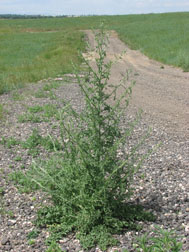
Figure 1. Large diffuse knapweed plant nearing flowering growth stage. |
Diffuse knapweed (Centaurea diffusa) is a short-lived perennial, a biennial, or occasionally an annual. It reproduces and spreads from seed. The plant develops a single shoot (stem), 1 to 2 feet tall or more, that is branched toward the top (Figure 1). Grazed plants may produce multiple stems. Rosette and lower shoot leaves are deeply divided and covered with short hairs (Figure 2 and 3). Leaves become smaller toward the top of the shoot and have smooth margins.
Many solitary flowering heads occur on shoot tips. They are about 1/8 inch in diameter and 1/2 to 2/3 inch long. Flowers usually are white but may be purplish (Figure 4). Involucre bracts are divided like teeth on a comb and tipped with a slender spine that makes them sharp to the touch. Sometimes the bracts are dark-tipped or spotted like spotted knapweed. The long terminal spine differentiates diffuse from spotted knapweed (Figure 6).
Spotted knapweed (Centaurea stoebe; a.k.a., C. biersteinii and C. maculosa) looks like diffuse knapweed with some notable exceptions. Spotted knapweed is a shortlived, non-creeping perennial that reproduces from seed (primary means of spread) and forms a new shoot each year from a taproot. The weed produces one or more shoots that are branched and 1 to 3 feet tall. Rosette leaves can be 6 inches long and deeply lobed. Leaves are similar to diffuse knapweed. Lavender to purple flowers are solitary on shoot tips and about the same size as diffuse knapweed flowers (Figure 5 and 6). Involucre bracts are stiff and black-tipped. The tip and upper bract margin have a soft, spinelike fringe and the center spine is shorter than others.
Phenology, Biology and Occurrence
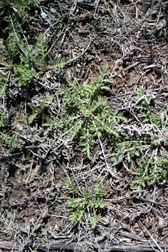
Figure 2. Diffuse knapweed rosettes. |
Diffuse knapweed seeds germinate in spring or fall or anytime during the growing season following a disturbance, if adequate soil moisture is present. Seedlings develop into rosettes and diffuse knapweed remains as a rosette until it grows to a critical size, then it bolts, flowers, and sets seed. It may take from one to several years for diffuse knapweed to reach the critical size necessary to reproduce by seed. Diffuse knapweed plants break off at the soil surface and become tumbleweeds over winter and disperse their seeds in the process. It often gets caught in pasture fences (Figure 7), which can lead to damaged fences.
Diffuse knapweed is native to degraded noncropland (waste places) and seashores from southern Europe to north-central Ukraine. It generally is found on dry, light, porous soils in Europe. Diffuse knapweed appears to occupy similar areas in the United States. Diffuse knapweed will not tolerate flooding or shade and thrives in the semiarid west (generally in 9- to 16-inch precipitation zones). Environmental disturbance (e.g., overgrazed pastures or rangeland, roadsides, rights-of-way, gravel piles, etc.) promotes its invasion.
In Colorado, the worst infestations occur along the Front Range in Larimer, Boulder, Douglas and El Paso counties. Severe infestations also occur in Archuleta and La Plata counties. A 2005 survey conducted by the Colorado Department of Agriculture found over 138,400 acres infested with diffuse knapweed (Figure 8) and over 10,000 acres infested with spotted knapweed (Figure 9).
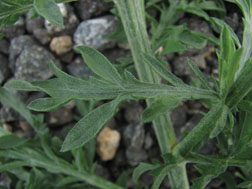
Figure 3. Diffuse knapweed leaves; note fine, short hairs on surface. |
Spotted knapweed germinates in spring or fall. Perennial plants resume growth in early spring and bolt at approximately the same time as diffuse knapweed. Flowering occurs through the summer into fall.
Spotted knapweed is native to central Europe, where it is found in light, porous, fertile, well-drained and often calcareous soils in warm areas. It occupies dry meadows, pastureland, stony hills, roadsides, and the sandy or gravelly floodplains of streams and rivers. The greatest abundance of spotted knapweed in Europe occurs along forest/grassland interfaces. Spotted knapweed tolerates dry conditions, similar to diffuse knapweed, but survives in higher moisture areas as well (e.g., it thrives in the wetter conditions of the western Montana mountains). Spotted and diffuse knapweed infestations often occur together in Colorado.
Spotted knapweed infestations are not as severe in Colorado as diffuse knapweed. However, this weed spreads rapidly. For example, spotted knapweed was first observed in Gallatin County, Montana, in the 1920s, but is now found in all Montana counties. Today, over 4.7 million acres are infested.
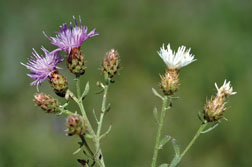
Figure 4. Diffuse knapweed flowers, note fringe on sides of bracts and long terminal spine on bract tips. |
Management
Diffuse and spotted knapweed can be managed similarly. They are readily controlled with herbicides. However, the weeds will reinvade unless cultural techniques are used.
Chemical control. Research conducted at Colorado State University indicates that Tordon 22K (picloram), Milestone (aminopyralid), Transline (clopyralid), Curtail (clopyralid + 2,4-D), or Banvel/Vanquish/Clarity (dicamba) control diffuse knapweed. Tank mixes of Banvel/Vanquish/Clarity plus 2,4-D at 1 pt + 2 pt/A or Banvel/Vanquish/Clarity control diffuse knapweed. Refer to Table 1 for rate and timing recommendations.
| Table 1. Herbicide used to control diffuse and spotted knapweed. | |||
| Herbicide | Rate (Product/A) | Application timing |
Comments |
| Tordon | 1 to 2 pints | Spring at rosette to mid-bolt growth stages; or fall | Use higher rates for older or dense stands |
| Milestone | 5 to 7 fl oz | Spring at rosette to bolting growth stages; or fall | Use higher rate for older or dense stands; Milestone may be used to edge ponds or streams |
| Transline | 0.67 to 1.33 pints | Spring after all shoots have emerged, rosette to early bud growth stages; or fall | Use higher rate for older or dense stands |
| Curtail | 2 to 3 quarts | Spring after all shoots have emerged, rosette to early bud growth stages; or fall | User higher rate for older or dense stands |
| Banvel, Vanquish, or Clarity (dicamba) |
1 to 2 pints | Spring rosette growth stage; or in fall | Use higher rate for older or dense stands |
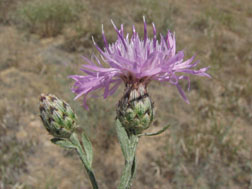
Figure 5. Spotted knapweed flowers; note dark-tipped bracts and lack of long terminal spine on teip of bract. |
|

Figure 6.Diffuse knapweed on left, spotten knapweed on right. |
|
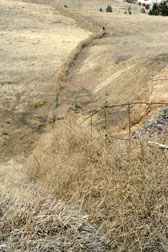 |
|
Figure 7. Winter dispersal of tumbling diffuse knapweed caught in pasture fence. |
Tank mixes of Banvel/Vanquish/Clarity plus 2,4-D at 1 pint + 2 pints/A or Banvel/Vanquish/Clarity plus Tordon 22K at 1 to 2 pints + 0.5 to 1 pint/A or Tordon plus 2,4-D at 0.75 pint + 2 pints/A all control diffuse knapweed. These tank-mixes may save money and reduce grass injury resulting from higher use rates of a single herbicide. Adding 2,4-D to a tank mix, however, with very selective herbicides such as Tordon, Milestone, or Transline, broadens the spectrum of activity and may result in increased injury to desirable native forbs (broadleaf plants) and shrubs, which are important components of the plant community to resist re-invasion by weedy forbs (broadleaf weeds like diffuse and spotted knapweed).
Spotted knapweed and diffuse knapweed generally occupy the same areas in Colorado, so the same herbicide treatments can be applied. Weed scientists at Montana State University indicate that Tordon controls spotted knapweed for two to three years, but the weed will reinvade the area unless other management techniques are used. Milestone also is very effective to control spotted knapweed and Transline, Curtail, and Banvel/Vanquish/Clarity also control spotted knapweed and these herbicides too should be coupled with cultural control.
Cultural control. If desirable plant (grasses and forbs) competition is evident in diffuse or spotted knapweed stands, judicious herbicide application that does not injure desirable plants (especially grasses) may allow them to compete effectively with the weeds. Irrigation (where possible) may help stimulate grass competition in these cases. However, infested rangeland or pastures often are degraded, allowing knapweed invasion, and herbicides alone usually will not restore the land to a productive state. Seeding suitable perennial grasses, forbs, and shrubs is necessary to prevent weed reinvasion.
Biological control. Many insects are being evaluated for biological control of diffuse and spotted knapweeds. Researchers at Montana State University believe it will take a complex of insects (perhaps 12) to reduce diffuse and spotted knapweed populations.
Several insects are available in Colorado from the Colorado Department of Agriculture. The seedhead flies Urophora affinis and U. quadrifasciata have been released in many Front Range counties. These insects cause plants to produce fewer viable seeds and abort terminal or lateral flowers.
Root-feeding insects may have a more detrimental effect on knapweed populations than seed-feeding ones. Larvae of the diffuse knapweed root beetle (Sphenoptera jugoslavica) feed in the roots of diffuse knapweed. Larvae of the yellow-winged knapweed moth (Agapeta zoegana) and the knapweed root weevil (Cyphocleonus achates) feed in the roots of both knapweed species. The knapweed seedhead weevil (Larinus minutus) is an extremely aggressive and effective biocontrol insect for diffuse and spotted knapweed. Larvae consume knapweed seeds and up to 100 percent of seeds may be destroyed in an infested seedhead. When larval development is complete, larvae pupate then emerge from the seedhead as adults and consume foliage of diffuse and spotted knapweed until they enter the litter and soil to overwinter.
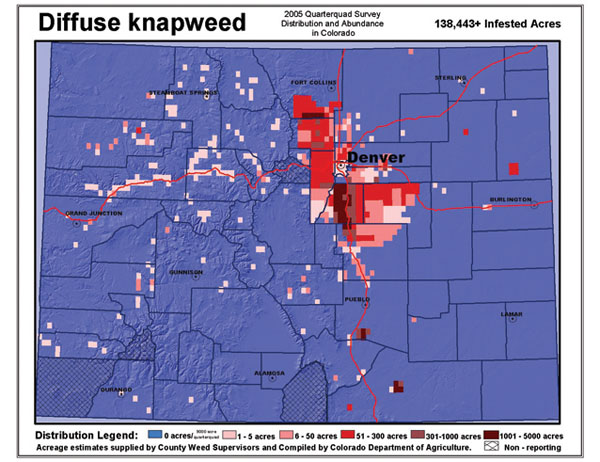
Figure 8. A 2005 survey conducted by the Colorado Department of Agriculture found 138,443 infested acres of diffuse knapweed. |
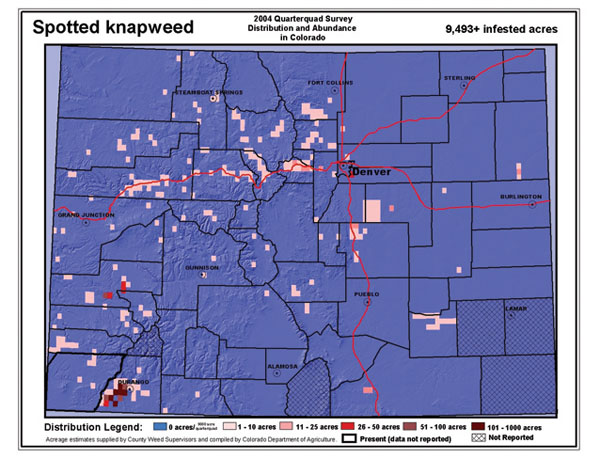
Figure 9. A 2004 survey conducted by the Colorado Department of Agriculture found 9,493 infested acres of spotted knapweed. |
Livestock (sheep, goats, cattle) will eat diffuse and spotted knapweed. Research completed by Colorado State University shows that cattle grazing diffuse knapweed twice in spring decreased seed set by 50 percent and tumbling off-site over winter by 15 percent. Cattle were managed to achieve 50 percent utilization of pasture and were allowed to graze at two, 10-day intervals when diffuse knapweed was bolting and about 6 to 12 inches tall.
*Colorado State University Extension weed science specialist and professor, bioagricultural sciences and pest management. 3/03. Revised 11/13.
Colorado State University, U.S. Department of Agriculture, and Colorado counties cooperating. CSU Extension programs are available to all without discrimination. No endorsement of products mentioned is intended nor is criticism implied of products not mentioned.
Go to top of this page.





